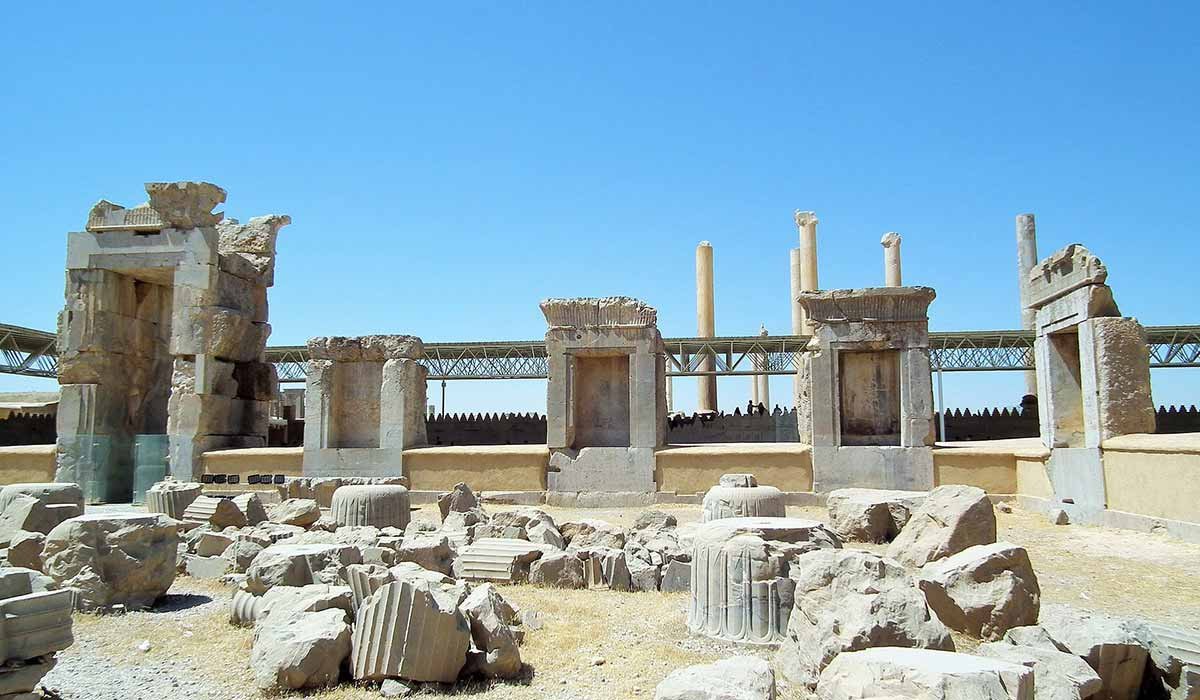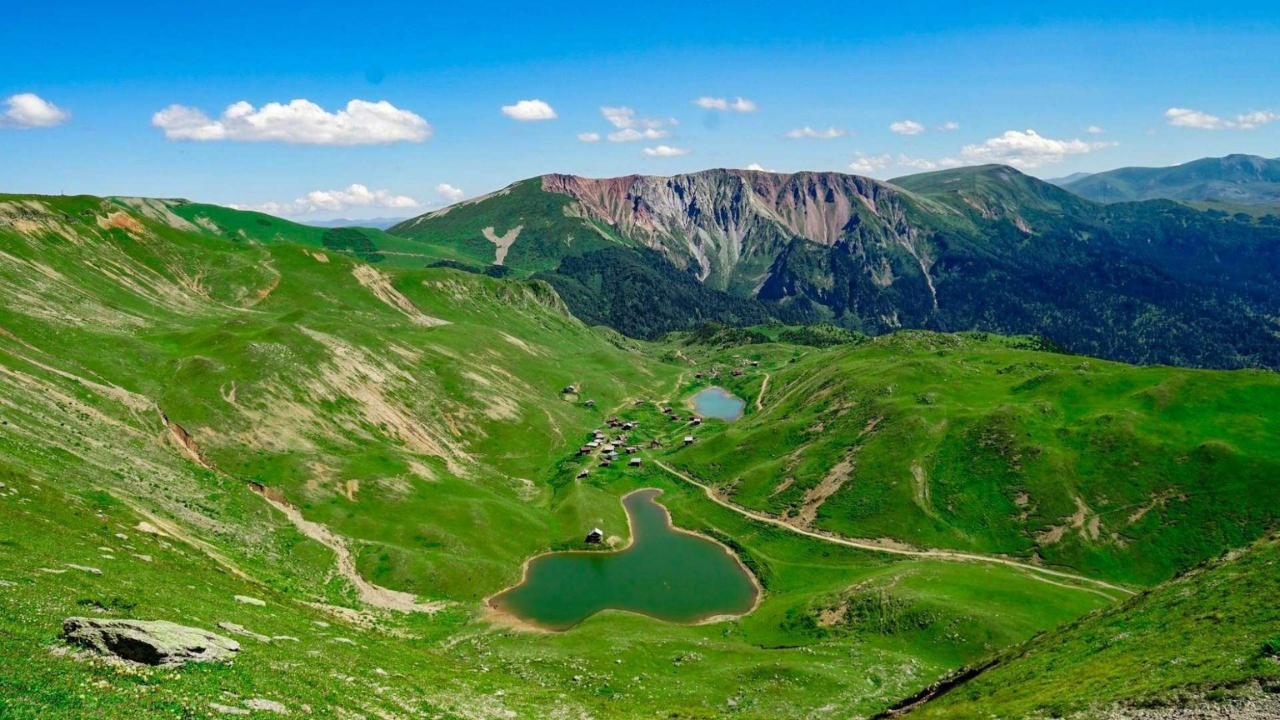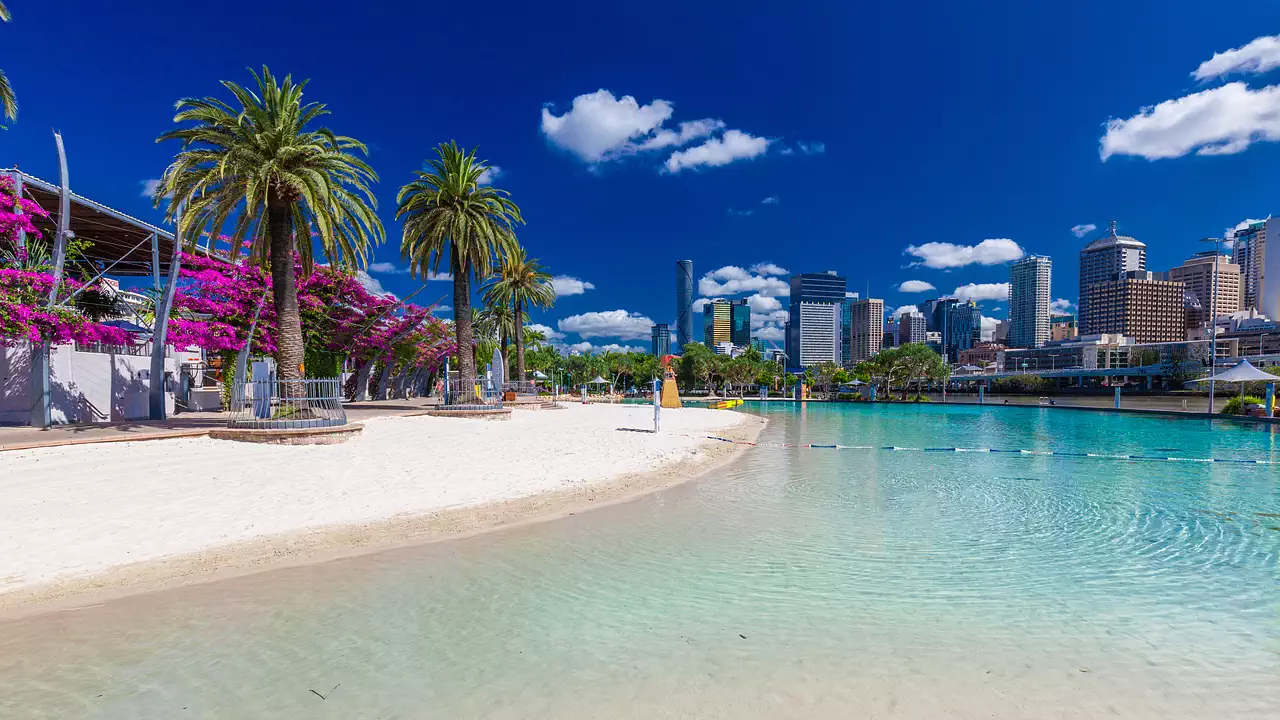The Historical and Archaeological Marvels of Fars
Fars Province, historically known as Pars or Persis, was the cradle of the Achaemenid and Sassanid Empires, leaving behind a wealth of archaeological sites that rival Persepolis in significance. These sites offer a glimpse into Iran’s ancient past, showcasing the architectural and cultural achievements of its rulers.
Pasargadae: The First Achaemenid Capital
Located approximately 80 kilometers northeast of Shiraz, Pasargadae was the first capital of the Achaemenid Empire, founded by Cyrus the Great in the 6th century BCE. A UNESCO World Heritage Site, Pasargadae is home to the iconic Tomb of Cyrus, a simple yet majestic limestone structure that stands alone in the vast Morghab Plain. Its minimalist design, with a gabled roof atop a stepped platform, reflects the humility and grandeur of Cyrus, revered as the founder of the Persian Empire.
Beyond the tomb, Pasargadae includes remnants of palaces, gardens, and the so-called “Prison of Solomon,” a mysterious structure possibly used for ceremonial purposes. The site’s serene setting, framed by the Zagros Mountains, offers a contemplative experience, allowing visitors to connect with the origins of Persian civilization. Unlike the more crowded Persepolis, Pasargadae provides a quieter, more intimate encounter with history, making it ideal for those seeking reflection amid ancient ruins.
Naqsh-e Rustam: The Royal Necropolis
Just 6 kilometers north of Persepolis, Naqsh-e Rustam is a breathtaking archaeological site featuring rock-cut tombs of Achaemenid kings, including Darius I, Xerxes I, Artaxerxes I, and Darius II. Carved into a towering cliff face, these colossal tombs are adorned with intricate reliefs depicting royal victories and Zoroastrian motifs. The site also includes Sassanid-era rock reliefs, such as the triumph of Shapur I over Roman emperors, blending two distinct periods of Persian history.
The Ka’ba-ye Zartosht, a cube-shaped structure at the base of the cliff, adds to the site’s enigma. Possibly a Zoroastrian fire temple or a royal treasury, its purpose remains debated, inviting speculation and wonder. Naqsh-e Rustam’s dramatic setting and historical depth make it a must-visit for those interested in the grandeur of ancient Persia, offering a perspective distinct from Persepolis’ ceremonial splendor.
Firuzabad: Sassanid Splendor
Firuzabad, located 100 kilometers south of Shiraz, is a showcase of Sassanid architecture and urban planning. Founded by Ardashir I in the 3rd century CE, the city is home to two remarkable sites: Qal’eh Dokhtar and the Palace of Ardashir. Qal’eh Dokhtar, a hilltop fortress, was built as a defensive stronghold, with its strategic location offering panoramic views of the surrounding plains. Its thick stone walls and arched chambers reflect early Sassanid engineering.
The Palace of Ardashir, a short distance away, is a stunning example of Sassanid architecture, featuring domed ceilings, intricate stucco work, and a central courtyard. The palace’s location near a spring-fed pool adds to its picturesque allure, evoking the opulence of Sassanid royalty. Firuzabad’s circular city layout, a testament to Ardashir’s innovative urban planning, is still visible in aerial views, making it a fascinating stop for history enthusiasts.
Bishapur: A Sassanid City
Further west, near Kazerun, lies Bishapur, another Sassanid city founded by Shapur I in the 3rd century CE. This UNESCO World Heritage Site, part of the Sassanid Archaeological Landscape of Fars Region, includes the ruins of a royal palace, a temple, and six rock reliefs depicting Sassanid victories. The Anahita Temple, dedicated to the Zoroastrian goddess of water, features underground water channels, showcasing advanced hydraulic engineering.
The nearby Shapur Cave, accessible by a challenging hike, houses a colossal statue of Shapur I, carved from a single stalagmite. The cave’s remote location and the statue’s imposing presence create a sense of awe, making it a rewarding destination for adventurous travelers. Bishapur’s blend of urban ruins and natural beauty offers a unique perspective on Sassanid culture, distinct from the Achaemenid focus of Persepolis.
Natural Wonders of Fars Province
Beyond its historical treasures, Fars Province boasts diverse landscapes, from rugged mountains to serene lakes, offering a range of outdoor experiences for nature lovers. The province’s three climatic zones—mountainous north, central deserts, and hot southern plains—create a variety of ecosystems that attract adventurers and photographers alike.
Maharloo Lake: The Pink Phenomenon
Located in Sarvestan County, about an hour’s drive from Shiraz, Maharloo Lake is a striking natural wonder known for its pink hue, caused by algae and mineral sediments. Once a thriving saltwater lake, it has partially dried up, creating a surreal landscape of salt flats and vibrant water pools. The lake’s unique coloration, especially vivid during summer, has made it a popular spot for locals and tourists, who capture its otherworldly beauty in photographs.
While some view the lake’s drying as an environmental concern, its transformation into a pink spectacle has turned it into an unexpected attraction. Visitors are advised to respect the fragile ecosystem and avoid disturbing the salt crusts. Maharloo’s proximity to Shiraz makes it an accessible day trip, offering a stark contrast to the province’s historical sites.
Zagros Mountains: Trekking and Nomadic Encounters
The Zagros Mountains, stretching across northern Fars, provide a dramatic backdrop for outdoor adventures. Accessible from Shiraz, the mountains offer trekking opportunities for all skill levels, with trails winding through rivers, waterfalls, and lush valleys. A two-day trek, as described by travelers, includes scenic routes and opportunities for barbecues and camping under the stars.
The Zagros is also home to the Qashqai nomads, whose vibrant culture and traditional lifestyle attract cultural enthusiasts. Visitors can arrange to visit nomadic camps, spending a day or night with families to learn about their customs, such as weaving Gabbeh rugs and herding livestock. These encounters, facilitated by local guides, offer a respectful and immersive way to engage with Fars’ living heritage.
Margoon Waterfall: Nature’s Masterpiece
Near Sepidan, approximately 100 kilometers north of Shiraz, the Margoon Waterfall cascades down a rocky cliff, surrounded by lush greenery. Known as one of Iran’s most beautiful waterfalls, Margoon is a haven for nature lovers, with its misty spray and scenic trails. The surrounding area, part of the Sepidan region, also offers opportunities for alpine skiing in winter, making it a year-round destination.
The waterfall’s pristine setting is ideal for picnics and photography, though visitors should come prepared with sturdy shoes for the rugged terrain. Sepidan’s cooler climate, compared to the hotter southern plains, provides a refreshing escape, especially in spring when wildflowers bloom.
Bamu National Park: Wildlife Haven
Located 10 kilometers north of Shiraz, Bamu National Park spans 48,000 hectares and is a protected area known for its biodiversity. Home to species like leopards, hyenas, and various birds, the park offers hiking trails and opportunities for wildlife spotting. Its location along the Shiraz-Pasargadae route makes it an easy stop for those visiting historical sites. The park’s rugged terrain and scenic vistas provide a peaceful retreat, showcasing Fars’ natural diversity.
Cultural and Historical Sites Beyond the Capitals
Fars Province is dotted with smaller towns and villages that preserve unique cultural and historical landmarks, offering a deeper dive into the region’s heritage.
Sarvestan Palace: A Sassanid Mystery
Located 90 kilometers southwest of Shiraz, the Sarvestan Palace is a 5th-century Sassanid structure built by King Bahramgur. Unlike traditional palaces, its purpose is debated—possibly a hunting lodge or Zoroastrian sanctuary. The palace features three iwans (vaulted halls) and stone construction, with remnants of decorative wall finishes. Its strategic location overlooking a vast plain adds to its allure, while traces of an adjacent structure hint at further mysteries. The palace’s understated elegance contrasts with the grandeur of Persepolis, offering a quieter historical experience.
Naqsh-e Rajab: Intimate Rock Reliefs
Near Naqsh-e Rustam, Naqsh-e Rajab is a smaller site featuring four Sassanid rock reliefs, including the investiture of Ardashir I and Shapur I. Tucked into a small gorge, these finely preserved carvings depict royal ceremonies and victories with intricate detail. The site’s intimacy, compared to the grandeur of Naqsh-e Rustam, allows visitors to appreciate the artistry up close, making it a hidden gem for art and history enthusiasts.
Fasa: Sassanid and Islamic Heritage
The city of Fasa, southeast of Shiraz, is a lesser-known destination with a rich history. A Sassanid-era castle atop a hill and ceramic artifacts hint at its ancient significance, while the nearby Kharman Kooh summit, at 3,183 meters, offers hiking opportunities. Fasa’s historical prominence as the second most important town in the 4th-century Darabgerd State adds to its appeal. The city’s mountainous setting and flat plains provide a diverse landscape for exploration.
Practical Tips for Exploring Fars Province
Visiting Fars Province’s lesser-known attractions requires planning, as public transportation is limited. Hiring a private car or taxi with a local guide, such as those offered by agencies like Key2Persia, is recommended for efficient travel and historical context. Spring (March-May) is the ideal time to visit, with pleasant weather across the province’s diverse climatic zones. Travelers should dress modestly, respecting local customs, and carry cash (Iranian rials) for smaller sites and rural areas.
Accommodations in towns like Kazerun, Fasa, or Firuzabad are modest but comfortable, with guesthouses and small hotels available. For a unique experience, consider camping near the Zagros Mountains or staying with Qashqai nomads, though arrangements should be made through reputable guides to ensure cultural sensitivity. Always check travel advisories and obtain necessary visas, as Fars Province’s proximity to the Persian Gulf may require additional precautions.
Conclusion: Unveiling Fars’ Hidden Treasures
Fars Province, beyond the well-trodden paths of Shiraz and Persepolis, is a region of unparalleled diversity, where ancient history, natural beauty, and living traditions converge. From the majestic tombs of Naqsh-e Rustam to the pink waters of Maharloo Lake, and from the Sassanid ruins of Bishapur to the nomadic camps of the Zagros, Fars offers a wealth of experiences for intrepid travelers. These sites, less crowded than their famous counterparts, allow for a deeper connection with Iran’s heritage, inviting visitors to explore with respect and curiosity.
As you plan your journey, consider the words of Persian poet Hafez, whose spirit lingers in Fars: “The world is a mirror of the soul; travel it to know yourself.” By venturing beyond Shiraz and Persepolis, you’ll uncover the soul of Fars Province—a land where history whispers, nature captivates, and culture endures. For more information, consult reputable sources like UNESCO’s World Heritage listings or local tourism agencies to ensure a fulfilling and respectful exploration.



